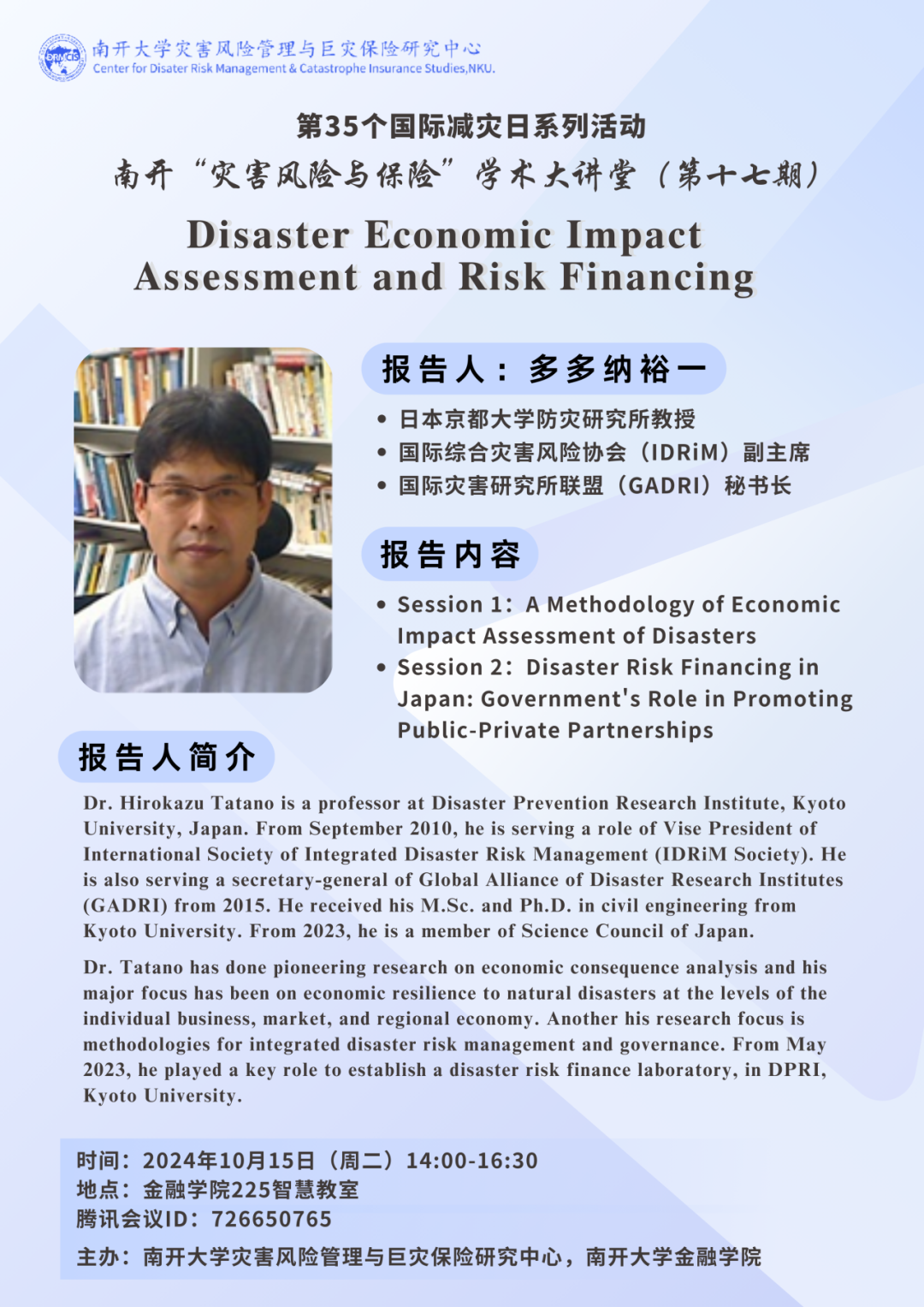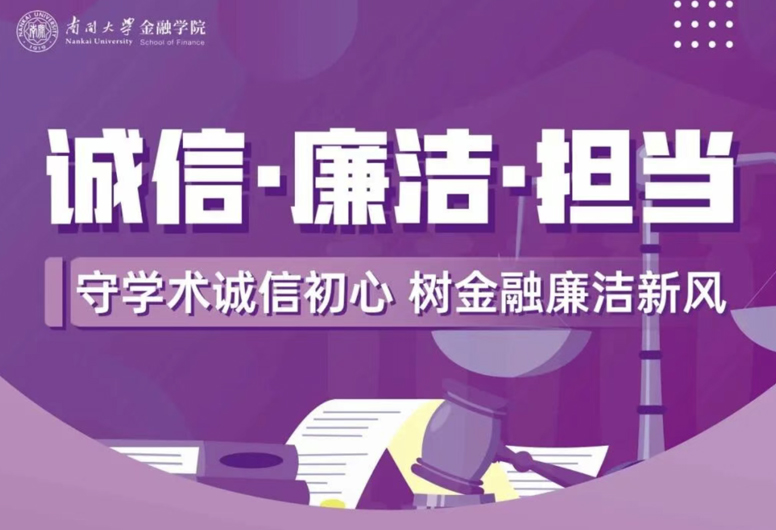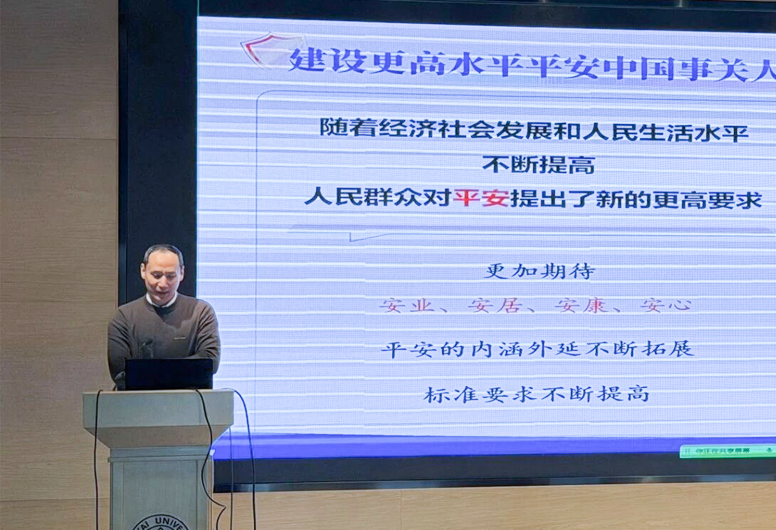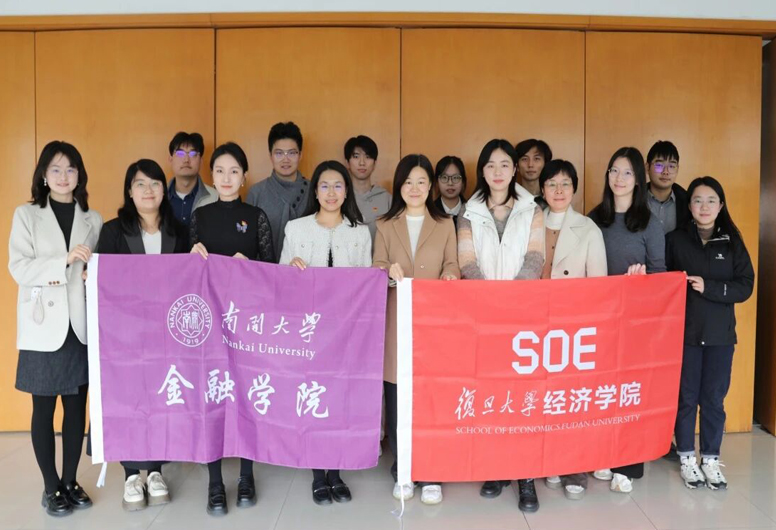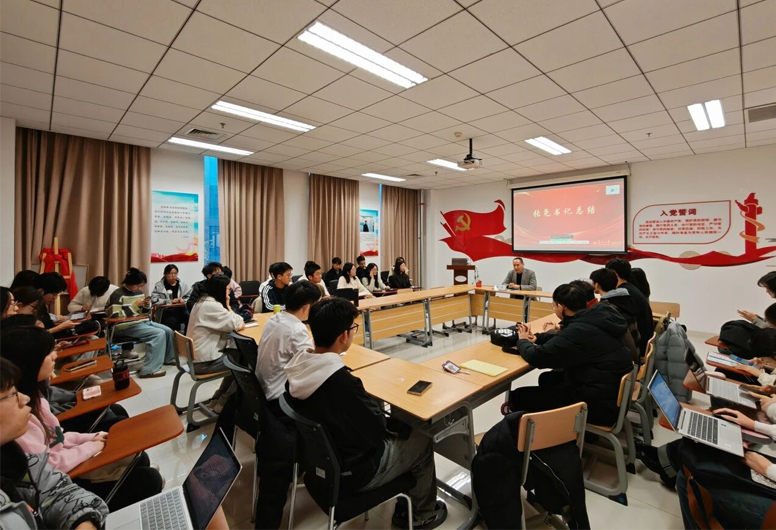活动预告丨南开“灾害风险与保险”学术大讲堂(第十七期)
第35个国际减灾日系列活动
南开“灾害风险与保险”学术大讲堂(第十七期)
Nankai"Disaster Risk and Insurance" Academic Forum(17th issue)
Disaster Economic Impact
Assessment and Risk Financing
报告人
多多纳裕一
日本京都大学防灾研究所教授
国际综合灾害风险协会(IDRiM)副主席
国际灾害研究所联盟(GADRI)秘书长
报告内容
Session 1:A Methodology of Economic Impact Assessment of Disasters
Session 2:Disaster Risk Financing in Japan: Government's Role in Promoting Public-Private Partnerships
主持人
蒋新宇
南京大学政府管理学院特聘研究员
南开大学灾害风险管理与巨灾保险研究中心副主任
时间地点
2024年10月15日 14:00-16:30
金融学院225智慧教室
腾讯会议ID:726650765
主办
南开大学灾害风险管理与巨灾保险研究中心
南开大学金融学院
报告人简介
Dr. Hirokazu Tatano is a professor at Disaster Prevention Research Institute, Kyoto University, Japan. From September 2010, he is serving a role of Vise President of International Society of Integrated Disaster Risk Management (IDRiM Society). He is also serving a secretary-general of Global Alliance of Disaster Research Institutes (GADRI) from 2015. He received his M.Sc. and Ph.D. in civil engineering from Kyoto University. From 2023, he is a member of Science Council of Japan.
Dr. Tatano has done pioneering research on economic consequence analysis and his major focus has been on economic resilience to natural disasters at the levels of the individual business, market, and regional economy. Another his research focus is methodologies for integrated disaster risk management and governance. From May 2023, he played a key role to establish a disaster risk finance laboratory, in DPRI, Kyoto University.
报告摘要
Session 1:A Methodology of Economic Impact Assessment of Disasters
A disaster brings difficulties to a regional economy. As economic activities are often located in hazard-prone areas, a natural hazard has a significant impact on the economy. The presentation will explain a basic framework for estimating the economic impact of a natural hazard. The methodology consists of two parts: primary economic impact estimation and higher order impact estimation. The primary impact estimation method includes a functional fragility model to project the decline in production capacity according to the hazard level, a business recovery model to estimate the recovery period for different initial production capacities, and a lifeline resilience function that shows the remaining production capacity when a lifeline is disrupted. The higher-order impact estimation methodology includes a multi-regional computable general equilibrium model that can assess second- and higher-order impacts in the economy, including economic impacts in areas not affected by the natural hazard, such as supply chain impacts. A case study of the 2011 Great East Japan Earthquake illustrates the applicability of the methodology.
Session 2:Disaster Risk Financing in Japan: Government's Role in Promoting Public-Private Partnerships
Risk control and financing are the two main countermeasures in risk management. In terms of disaster risk financing, Japanese household earthquake insurance is under strong control of the national government, but flood insurance is provided by private insurance companies, whereas in the US, flood insurance is provided by the federal government, but earthquake insurance is provided by private insurance companies.
A natural catastrophe is an event of low frequency and high impact. This characteristic results in low insurability. To overcome this difficulty, reinsurance and insurance-linked securities such as CAT bonds are often used to diversify the risk concentrated in this area. Although such efforts have been made, it is still difficult for the private insurance industry to take on such risks.
From the Japanese policy, we point out three ways for the government to promote the private insurance system: (1) to reduce exposure vulnerability by implementing risk control measures, (2) to reduce high layer risk by providing government guarantee, (3) to build confidence by introducing appropriate incentive systems.
